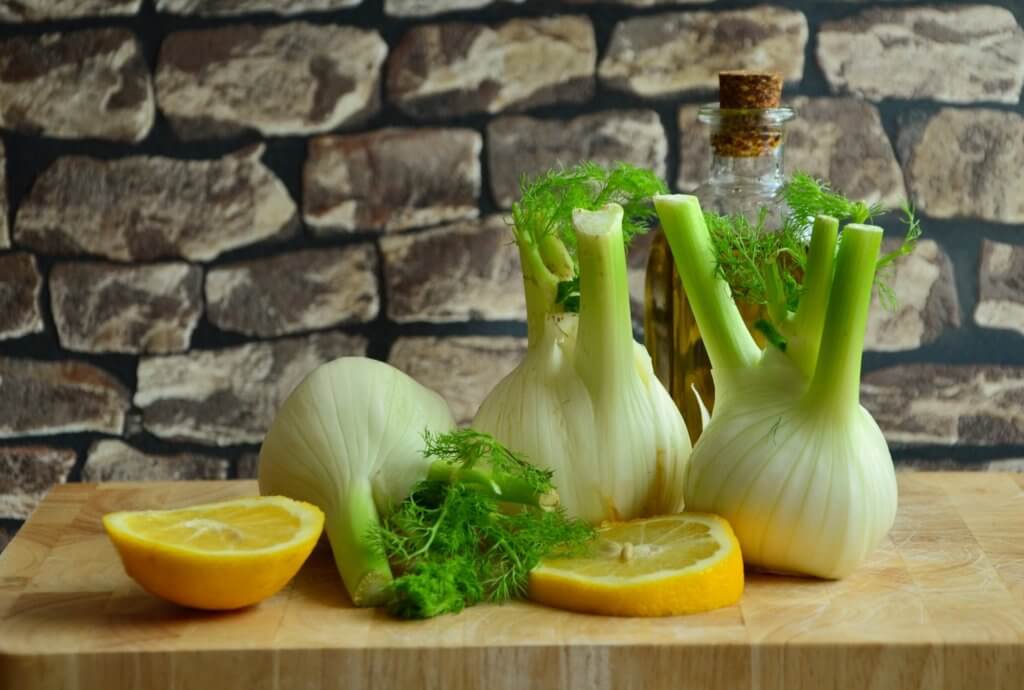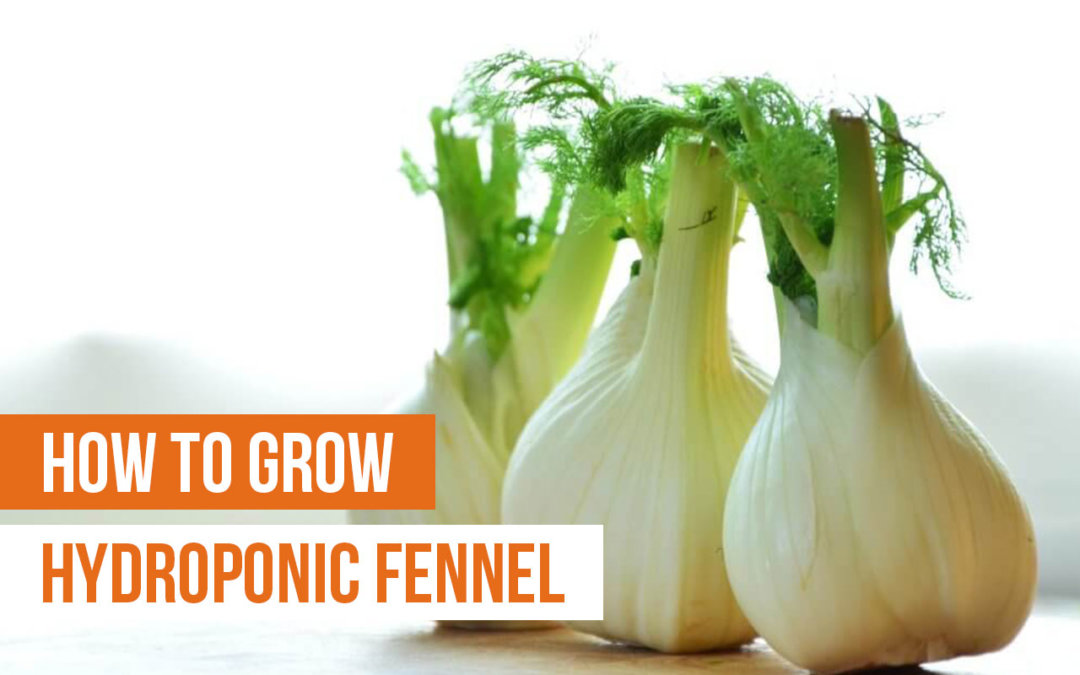Like many of our herbs, fennel (Foeniculum vulgare) originated in the Mediterranean area. Greece has a rather significant history with fennel; the ancient Greek word for fennel is “marathon”—as in the Battle of Marathon, which took place in a field of fennel after Pheidippides ran 150 miles to gather soldiers, establishing a base for our modern marathon.
A mildly sweet herb with a taste reminiscent of anise, fennel’s feathery leaves look similar to dill and are an excellent addition to white meats (especially fish!). Both the bulbs and the greens of fennel are edible and delicious. We’ve found that the greens may be harvested once before a full-plant harvest a few weeks later.
Fennel is a great herb to cook with. If your customers don’t know how to cook with it, remind them that the bulb can be cooked like an onion—caramelized, roasted, sautéed, or added to soups and other dishes. The greens can be added to dishes as a garnish, cut and sprinkled over fish, potatoes, and other mild and creamy concoctions, or even dried and saved.

Typical pricing for fennel
While most grocery stores carrying fennel sell it between $1 and $1.50 per bulb, some online sellers sell a bulb for up to $5.75.
Most Upstart Farmers will be somewhere between these two. Remember to sell your buyers on the competitive advantage of your produce. After all, your produce is probably the freshest and most transparently produced that they can find!
Keep in mind that other fennel is usually shrink-wrapped, shipped to the store, and only includes the bulb. Not to mention that even though it might be sold at a co-op or health food store, it’s probably not local.
To estimate what your pricing should be, go check out the pricing at the stores that offer fennel in your area and ask around: “What would you be willing to pay for picked-that-day, fresh, local and high-quality fennel?”
Ideal conditions for growing fennel
- EC: 1.0–1.4
- pH range: 6.4–6.8
- Temperature: 60–70°F (Heat and cold tolerant but NOT frost tolerant)
Fennel prefers a lower EC and moderate pH. Though fennel often proves drought tolerant, heat tolerant, and cold tolerant, it is not frost tolerant. Fennel rarely struggles with pests if it’s kept healthy, although aphid infestations could affect the crop.
Fennel has a wider range of germination rates, from about 60% to 90%. Be sure to get good seed (Baker Creek and Johnny Seeds are both great places to start). Seeds take 1–2 weeks to germinate and are typically ready to plant 3–5 weeks later. The bulbs can be harvested as soon as the grower wants, but .5 to 1 lb bulbs are standard in most markets. From harvest, it takes most plants 6–8 weeks to reach harvesting size.
You can harvest fennel twice (once just for the greens, once for the bulb and greens together) if you have a market hungry for the greens. As with chard and kale, you should only take about 70% of the greens in the first harvest. In a healthy system, fennel can yield 5–8 lbs per ZipGrow Tower per 8-week turn.
 Creating a crop list?
Creating a crop list?
Choosing crops for your farm requires a balance of market information and crop suitability. Growers have to choose crops that have overlapping needs, like:
- pH range
- EC range
- Temperature range
Get this information for the most highly recommended crops for ZipGrow Towers in the Recommended Crop List.


